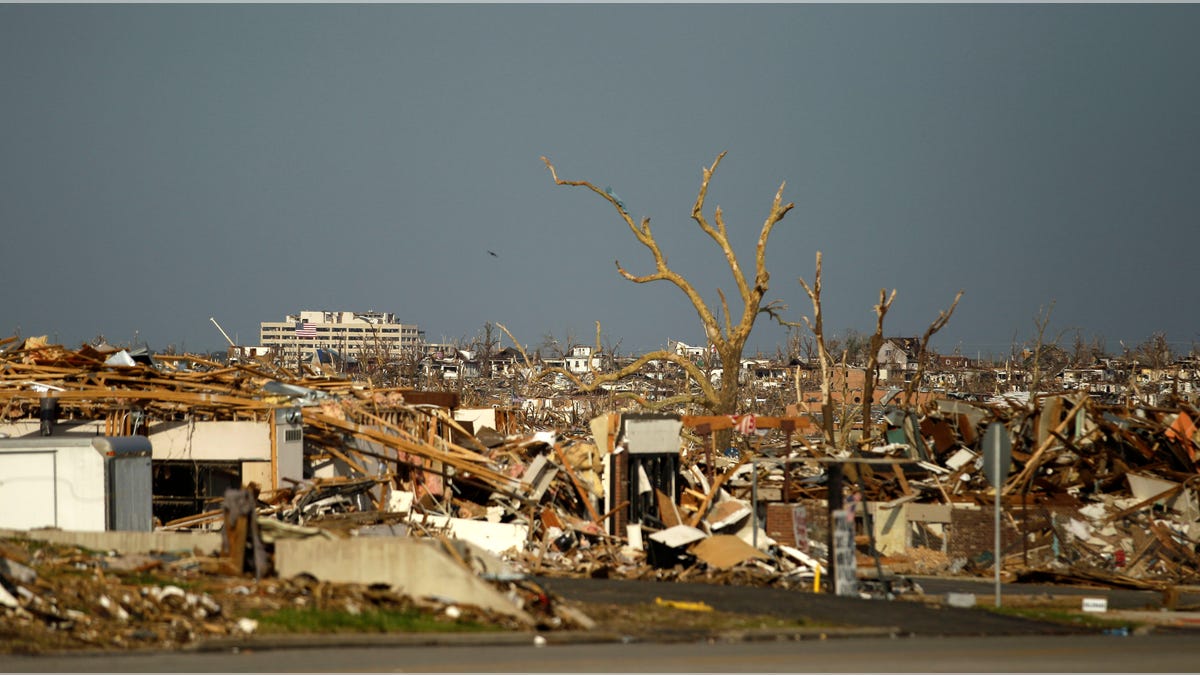
May 30: Damage is seen in a devastated Joplin, Missouri neighborhood. A federal agency was set to release a report today detailing communication efforts ahead of the massive twister that hit Joplin, killing more than 160 people. (AP)
KANSAS CITY, Mo. – Many Joplin, Mo., residents either ignored or were slow to react to the first warning sirens about a massive and deadly tornado this spring, partially because of years of false alarms, the government said Tuesday.
In assessing the communications and warning systems used in the storm that killed 162 people, the National Oceanic and Atmospheric Administration said many people waited for additional information.
"The majority of surveyed Joplin residents did not immediately go to shelter upon hearing the initial warning," the report stated, adding that they "did not take protective action until processing additional credible confirmation of the threat and its magnitude from a non-routine, extraordinary risk trigger."
While officials believe residents didn't respond quickly enough to sirens and warning systems, Richard Wagenmaker, a National Weather Service meteorologist in Detroit and leader of the assessment team, said it was unclear if the slow public response cost lives.
"It's really hard to tell how many people that perished in the tornado did not take shelter," Wagenmaker said during a conference call. "It was a very large tornado, so there were certainly a number of people who did all the right things, took shelter in the best available place, but still found themselves in situations that weren't survivable. So it's really hard to make that assessment."
Another key finding was that after the intensity of the storm was clear, the resulting warnings "lacked enhanced wording to accurately portray that immediate action was necessary to save lives with this tornado."
The National Weather Service was overall well-prepared and "performed in an exemplary manner" during the storm, NOAA said, adding that combined efforts from the weather service, emergency management and the public "saved many lives."
But the report said "the vast majority of Joplin residents" didn't respond to the first siren because of an apparent widespread disregard for tornado sirens.
"Relationships between false alarms, public complacency, and warning credibility are highly complex," the report stated.
Keith Stammer, Jasper County emergency manager, said Joplin is a "weather-ready community" and supported the NOAA assessment. He said the city has applied for federal funding 10,000 weather radios for Joplin households and for 4,000 in-place shelters for Joplin residents.
A team from the NWS examined warning and forecast services before the EF-5 tornado cut through the southwest Missouri city of about 50,000 residents and reduced much of the city's southern half to ruins.
Cleanup, recovery and rebuilding continues in Joplin. Four schools were destroyed and six other district buildings were damaged. Entire neighborhoods were leveled, as was much of the city's main commercial district.





















